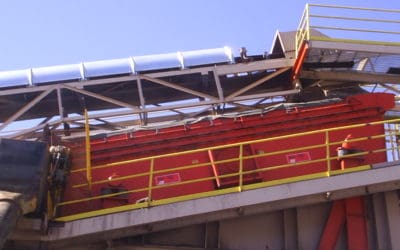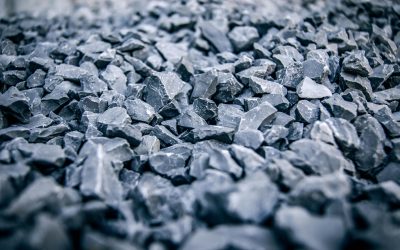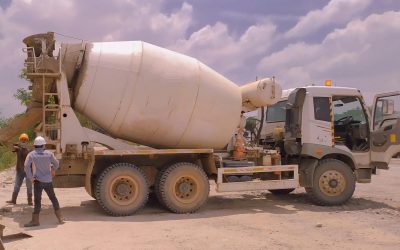FAQ
AEI Screens’ FAQ page is your go-to resource for information on our innovative solutions for material processing and screening applications. Learn more about the BIVITEC, Ortner, and Freedom Disc Screen and how they can streamline your operations.
If you have any other questions or require assistance, please don’t hesitate to contact our team.
General Questions
Can I schedule a demo before making a purchase?
AEI conducts all testing on customer sites to ensure that materials and operating conditions align with real-world scenarios.
Do you offer financing options?
AEI does not offer financing. We can refer you to a trusted partner upon request.
What is AEI Screens' warranty policy?
Our policy is 12 months non-wear items, but an extended warranty is available upon request.
Does AEI Screens offer any training on using your equipment?
Commissioning and training is included with every machine.
Does AEI Screens offer repair work or maintenance support?
AEI offers free customer support over the phone. Machine repair and refurbishment are available at the AEI facility. On-site technical inspection is available; we offer pricing upon request. We can refer you to qualified contractors if maintenance assistance is needed on site.
Where can I get replacement parts for your equipment?
All replacement parts are manufactured and inventoried here at AEI in Lancaster, PA.
How does AEI Screens prioritize sustainability and environmental responsibility in its operations and products?
AEI’s machinery and processes focus on the circular economy and the efficient recycling and recovery of materials to return to the supply chain. AEI’s machines allow the conservation of water and material in process across mining and recycling industries.
Questions about the BIVITEC
What are the advantages of using vibratory screens in material processing and sorting applications?
These screens offer efficient, customizable, and versatile solutions for material processing and sorting applications, providing high throughput capacity and minimal maintenance requirements. The BIVITEC is designed to handle the most difficult materials without any plugging, blinding, or damage to the equipment, helping to keep operations running smoothly.
How do vibratory screens improve efficiency and throughput compared to other screening methods?
Vibrating screens utilize high-frequency vibrations to ensure highly efficient particle separation. They can also be equipped with multiple screen decks, enabling simultaneous screening of various size fractions and processing larger volumes of material in a single pass.
To meet your specific requirements, you can customize your mesh size and scalping deck on the BIVITEC, and adjustable vibration amplitude and frequency settings allow operators to optimize the screening process.
What types of materials are typically processed using vibratory screens?
Vibratory screens are versatile and can process a wide range of materials across various industries. Some of the typical materials they’re used for include:
- Aggregates and minerals: sand, gravel, crushed stone, coal, ag lime, and gold ore
- Recycling materials: C&D waste, scrap metal, glass, plastics, auto shredder fluff, shredded tires, and roofing shingles
- Biomass and wood products: compost, leafy materials, peat moss, and wood waste
- Industrial materials: concrete, clay, and slag
How do you adjust the amplitude, frequency, and other parameters of a vibratory screen to optimize performance?
Amplitude refers to the distance the screen surface moves during one cycle of vibration. Higher amplitude can help in screening larger and heavier particles, while lower amplitude is better for finer particles and more-delicate materials.
Frequency refers to the number of vibration cycles per second (measured in Hertz). Higher frequency is generally used for finer materials, while lower frequency is better for coarser materials.
Other parameters that can be adjusted include the deck angle, screen tension, and feed rate. In order to test real-world applications, AEI Screens offers on-site testing of our equipment. We’ll work with you to find the right machine and settings for your application. Contact us for more information.
How do you maintain a vibrating screen?
These screens are built from rugged materials, so little maintenance is required. But to ensure safety, longevity, and optimal performance, it’s best to do routine inspections, lubrication, cleaning, tightening of loose components, and drive system and screen media maintenance.
Keeping a maintenance log and continually monitoring performance involving throughput rates and separation efficiency helps in identifying potential problems before they lead to significant failures.
What are some key considerations for safety when operating vibratory screens?
The equipment should feature adequate machine guarding, easily accessible emergency stops, and well-functioning control systems. Regular safety inspections and strict adherence to lockout/tagout (LOTO) procedures are essential.
Operators and maintenance personnel should be equipped with appropriate personal protective equipment and properly trained. AEI Screens offers training for all of our equipment.
Questions about the Ortner
What is sand washing equipment and why is it important in sand processing and aggregate production?
Sand washing machinery is used to clean and separate sand from unwanted materials, like clay, silt, and other impurities. This equipment may include sand washers, classifiers, and washing plants that utilize water and mechanical processes to remove contaminants from sand. There are several reasons why this equipment is important:
- Removes impurities: removing clay, silt, and dust results in cleaner, higher-quality sand that meets industry standards
- Enhances product quality: the sand’s overall quality and consistency are improved, which is crucial for its use in construction and other applications
- Increases yield: maximizing the recovery of fine sand particles helps to reduce waste and increase the overall yield of the sand production process
- Water recycling: many sand washing systems are designed to recycle water, reducing the environmental impact of sand processing
- Market value: high-quality, clean sand commands a better market price, providing a competitive edge to producers
- Application versatility: top-quality sand can be used for for concrete, mortar, and other construction materials as well as for glass manufacturing, foundry casting, and water filtration
What are the benefits of using sand washing equipment in construction, mining, and industrial applications?
Using sand washing equipment in these applications provides numerous benefits, including:
- Consistent quality
- Improved efficiency
- Enhanced durability and reliability
- Environmental sustainability
- Economic advantages
By ensuring the sand is clean and free of impurities, this equipment supports the production of high-quality materials essential for various industries, ultimately contributing to more efficient and cost-effective operations.
How long does it typically take to wash sand?
The time it takes to wash sand depends on several factors, including the type of equipment being used, the amount of sand being processed, and the level of contamination or impurities present in the sand.
Generally, for smaller batch-processing systems, it can take anywhere from 10 to 30 minutes to wash a batch of sand. For larger, continuous processing systems, the washing process is ongoing. Sand is fed into the system, washed, and then output in a continuous stream. In these setups, the effective washing time can be much shorter per unit of sand – often just a few minutes.
What is concrete sand used for?
Concrete sand’s versatility, stability, and ability to improve the strength and durability of various construction and landscaping materials make it an essential component in a wide range of applications. Its consistent particle size and coarse texture make it ideal for providing a solid foundation and enhancing the properties of different mixes:
- Concrete mixes
- Asphalt mixes
- Mortar mixes (for laying bricks, blocks, and stone)
- Bedding material (under pavers, slabs, bricks, and pipes in trenches)
- Backfilling
- Filling voids in construction projects
- Erosion control in landscaping projects
- Children’s sandboxes
- Under pool liners
Can sand washing equipment be used for recycling water and minimizing environmental impact?
This equipment plays a significant role in environmental sustainability through water recycling and minimizing ecological impact.
- Integrated water management: many modern sand washing plants come with integrated water recycling systems that collect the wash water, remove contaminants, and recycle it back into the washing process
- Closed-loop systems: some setups employ closed-loop water systems that continuously reuse the same water
- Efficient water use: by recycling water, sand washing equipment significantly reduces the amount of fresh water required for the washing process
- Less wastewater discharge: the volume of wastewater discharged into the environment is minimized, reducing the risk of water pollution
- Controlled disposal of sludge: the sludge and sediments collected during the recycling process can be managed more effectively, often allowing for environmentally friendly disposal or repurposing in other applications
How do dewatering machines differ from other types of solid-liquid separation equipment, such as centrifuges or filter presses?
These machines are all used to separate solids from liquids in various industrial processes. However, they differ significantly in their design, operation, and applications.
Dewatering machines utilize mechanical means (such as vibration, pressure, and gravity), and they’re perfect for applications requiring moderate dewatering with energy efficiency and lower operational costs. The Ortner uses even less water and energy than many other dewatering machines.
Centrifuges employ centrifugal force for high-efficiency separation. They’re suitable for fine particles and viscous liquids in compact setups, but they generally have higher energy consumption and operational complexity.
Filter presses use pressure filtration to achieve very high solids content, and they’re ideal for applications requiring dry filter cakes. They offer significant customization options but have potentially higher initial costs and more complex maintenance.
What are the main components of a sand washing plant and their functions?
A sand washing plant can be a complex system, but the main components are:
- Feed hopper: This is the entry point where raw sand and aggregates are loaded into the plant. It regulates the flow of material, ensuring a consistent and controlled feed rate.
- Screening equipment: Vibrating screens, rotary screens, or trommel screens are used to separate the sand into different size fractions. They ensure that only particles of the desired size continue through the washing process.
- Log washers or scrubbers: They’re used to clean the sand by agitating it with water, removing clay, silt, and other contaminants. They are particularly effective for highly contaminated material.
- Sand classifier: It separates the sand into coarse and fine fractions. It often uses water and gravity to classify the material, ensuring that fine particles are removed and coarse particles are retained.
- Sand washing machine: Wheel or spiral sand washers clean the sand by removing impurities and excess water. They use rotating impellers or screws to agitate the sand, promoting the separation of unwanted particles.
- Hydrocyclone: This is used to further remove fine particles and silt from the sand. They work by creating a centrifugal force that separates particles based on size and density, allowing clean sand to be collected and silt to be discarded.
- Dewatering screen: It removes excess water from the cleaned sand, producing a drier final product. It uses vibration to facilitate drainage.
- Thickener or clarifier: Thickeners or clarifiers remove suspended solids from the water, allowing it to be reused in the plant and reducing water consumption.
- Sludge management system: This handles the waste material generated from the washing process. This may include filter presses or centrifuges that dewater the sludge, making it easier to handle and dispose of.
Questions about the Freedom
What is a disc screen, and how does it work?
A disc screen is a type of screening equipment used primarily in the recycling and waste management industries to sort and separate materials based on size. This might include e-waste as well as metals, plastics, papers, and other recyclables.
The screen consists of a series of rotating discs mounted on parallel shafts, forming a series of openings that allow smaller materials to fall through while larger materials are carried over the top. Disc screens can be configured to separate materials into multiple size fractions by adjusting the size of the gaps between discs and the speed of the rotating motion, which helps prevent material from clogging the screen.
What’s the difference between a disc screen and a star screen?
Despite their similar purposes of separating materials based on size, these screens differ in design and application.
Star screens utilize flexible, star-shaped rotating elements mounted on parallel shafts, and they excel in handling wet, sticky, or fibrous materials. Their flexibility and resistance to clogging make them great for composting, soil screening, and recycling organic materials and construction debris.
Disc screens consist of a series of rotating, rigid discs mounted on parallel shafts. Their robust construction and efficient operation make them suitable for heavy-duty use in recycling, waste management, and forestry. They’re great for high-throughput applications involving dry, non-sticky materials. But the Freedom Disc Screen was designed to be able to handle the toughest materials without clogging or blinding issues.
What are some common industries or applications where disc screens are used?
Disc screens are versatile tools, but they are commonly utilized by:
- Material recovery facilities (MRFs): for recyclables like paper, cardboard, plastics, metals, and glass
- Municipal solid waste (MSW): for organic materials, plastics, metals, and other recyclables from municipal waste streams
- Composting facilities: to produce high-quality compost, they screen out non-compostable materials and contaminants from organic waste
- Paper mills: for sorting wood chips into different size fractions
- Biomass energy production: to ensure consistent particle size of biomass materials for efficient combustion and energy generation
- C&D recycling: for separating wood, metal, concrete, and other materials from construction and demolition waste
- Mining: to separate different sizes of ore and other mined materials
- Aggregate production: for gravel, sand, and other aggregate materials
- Scrap processing: to separate and classify scrap metal by size
What factors should be considered when setting up and operating a disc screen?
When setting up and operating a disc screen, several factors need to be considered to ensure optimal performance, efficiency, and safety.
- Type of material: understanding the material type (e.g., wood, plastics, metals, organic waste) is crucial for selecting the appropriate disc screen configuration
- Particle size distribution: this helps in setting the correct gap between discs
- Disc rotation speed: the speed at which the discs rotate affects the material flow and separation efficiency
- Feed rate: the rate at which material is fed onto the screen must match the screen’s capacity to prevent overloading or inefficiencies
- Inclination angle: the angle of inclination can affect material flow and separation efficiency
- Operator training: ensuring that operators are properly trained in the operation and safety procedures related to the disc screen
How do you maintain and clean a disc screen to ensure optimal performance?
Maintaining and cleaning a disc screen is essential to ensure its optimal performance, prolong its lifespan, and prevent unplanned downtime. This involves:
- Regularly inspecting the main components (discs, shafts, bearings, motor, and drive system)
- Monitoring of electrical systems
- Lubricating the moving parts
- Cleaning to remove debris and prevent clogging
- Tightening of loose components
- Checking disc alignment as well as the tension of the belts or chains driving the discs
- Keeping a maintenance log
If you didn’t find the answers to your questions, please feel free to contact us.
RECENT NEWS
What Makes the Banana BIVITEC® Different from a Standard Vibrating Screen?
When it comes to material screening, not all vibrating screens are created equal. Standard flat-deck screens can perform well in many situations,...
What Is Aggregate Screening?
Aggregate screening is a foundational process in construction and material processing — mechanically sorting crushed stone, sand, and gravel into...
Why Washed Aggregates are Essential for Concrete and Asphalt Production
Aggregates are a foundational component in both concrete and asphalt production, making up the bulk of the mix and directly influencing the...


